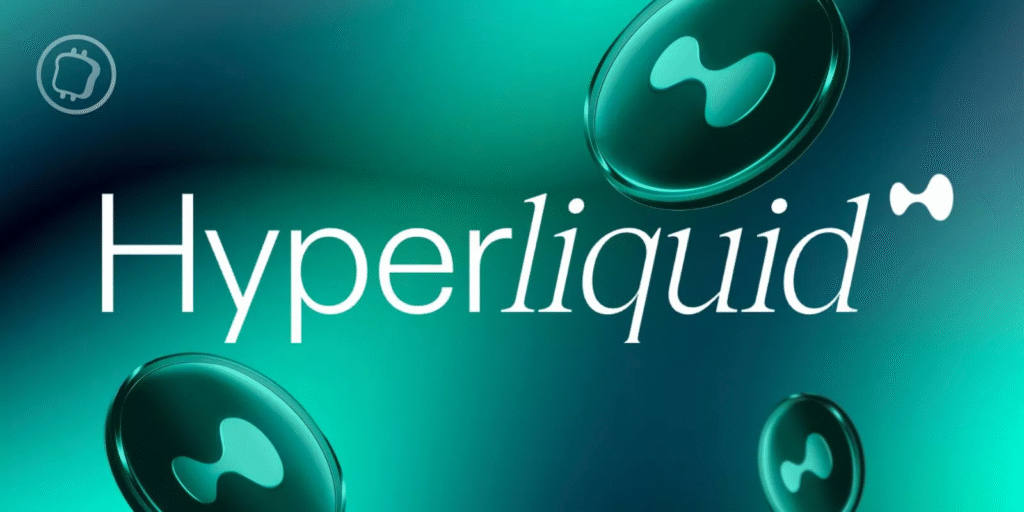The cryptocurrency trading landscape continues to evolve rapidly, and finding the best Hyperliquid trading strategies 2025 has become crucial for traders seeking consistent profits in the decentralized finance space. Hyperliquid has emerged as one of the most innovative perpetual futures trading platforms, offering unique features that traditional centralized exchanges simply cannot match. Whether you’re a seasoned trader or just starting your journey in DeFi trading, understanding these proven strategies can significantly impact your trading success.
In this comprehensive guide, we’ll explore the most effective trading approaches that have been tested and refined by successful traders throughout 2024 and early 2025. From basic scalping techniques to advanced algorithmic strategies, you’ll discover actionable insights that can help you navigate Hyperliquid’s unique ecosystem. The platform’s on-chain nature, combined with its sophisticated order book mechanics, creates opportunities that didn’t exist in traditional crypto trading environments.
What Makes Hyperliquid Different in 2025
Hyperliquid stands out in the crowded DeFi landscape as the first fully on-chain order book perpetual futures exchange. Unlike traditional AMM-based DEXs, Hyperliquid operates with a central limit order book (CLOB) that provides institutional-grade trading experiences while maintaining complete decentralization. This unique architecture enables traders to execute sophisticated strategies that were previously only available on centralized exchanges.
The platform’s native token, HYPE, has created additional trading opportunities through its innovative tokenomics. The on-chain settlement ensures that all trades are transparent and verifiable, while the absence of gas fees for trading operations makes high-frequency strategies viable. These characteristics have attracted both retail and institutional traders, creating a dynamic trading environment with consistent liquidity.
Best Hyperliquid Trading Strategies 2025 Core Techniques
Momentum-Based Scalping Strategy
Momentum scalping remains one of the most profitable approaches on Hyperliquid, particularly during volatile market conditions. This strategy involves identifying short-term price movements and capitalizing on them within minutes or hours. The key to successful momentum scalping lies in understanding market microstructure and recognizing when large orders are about to impact price movement.
Successful momentum traders on Hyperliquid typically focus on major cryptocurrency pairs during high-volatility periods. They use technical indicators like RSI, MACD, and volume analysis to identify entry and exit points. The platform’s zero gas fees make this strategy particularly attractive, as traders can execute multiple small trades without worrying about transaction costs eating into profits.
Risk management is crucial for momentum scalping success. Traders should never risk more than 1-2% of their total portfolio on a single trade and should always use stop-losses to protect against sudden market reversals. The strategy works best when combined with proper position sizing and strict adherence to predetermined entry and exit criteria.
Grid Trading Methodology
Grid trading has proven highly effective on Hyperliquid due to the platform’s stable liquidity and efficient order execution. This systematic approach involves placing multiple buy and sell orders at predetermined price levels, creating a “grid” of orders that profit from market volatility regardless of direction.
The strategy works particularly well in sideways markets where prices oscillate within a defined range. Traders set up grids with buy orders below the current market price and sell orders above it. As the price moves up and down, the grid automatically executes profitable trades. The key is selecting appropriate grid spacing and position sizes based on historical volatility data.
Advanced grid traders on Hyperliquid often combine multiple timeframes and adjust their grid parameters based on market conditions. During high volatility periods, they might use wider grid spacing to avoid frequent stop-outs, while in stable markets, tighter grids can capture smaller price movements more effectively.
Arbitrage Opportunities and Cross-Platform Trading
Hyperliquid’s unique position in the DeFi ecosystem creates numerous arbitrage opportunities that sophisticated traders can exploit. Price discrepancies often occur between Hyperliquid and other major exchanges, particularly during periods of high market stress or low liquidity.
Statistical arbitrage involves identifying price relationships between different assets and trading when these relationships deviate from their historical norms. On Hyperliquid, traders can exploit correlations between different perpetual contracts or between spot and futures prices. The platform’s fast settlement times and low latency make these strategies particularly viable.
Cross-platform arbitrage requires monitoring multiple exchanges simultaneously and executing trades when price differences exceed transaction costs and slippage. Successful arbitrageurs often use automated tools and APIs to identify and execute these opportunities quickly before they disappear.
Advanced Hyperliquid Trading Techniques for 2025

Algorithmic Trading and Bot Integration
The rise of algorithmic trading on Hyperliquid has created new opportunities for traders who can develop or access sophisticated trading algorithms. The platform’s API allows for seamless integration with trading bots and automated strategies, enabling 24/7 trading without constant manual supervision.
Popular algorithmic strategies include mean reversion bots that capitalize on price overshoots, trend-following algorithms that ride momentum, and market-making bots that provide liquidity while capturing spreads. The key to successful algorithmic trading lies in proper backtesting, risk management, and continuous strategy optimization.
Machine learning applications are becoming increasingly common, with traders using historical data to train models that can predict short-term price movements. These AI-driven approaches often outperform traditional technical analysis, particularly in volatile market conditions where human emotions can lead to poor decision-making.
Leveraged Position Management
Hyperliquid offers leverage up to 50x on major cryptocurrency pairs, creating opportunities for amplified returns but also significantly increased risks. Effective leverage management is crucial for long-term trading success and requires a deep understanding of position sizing, risk-reward ratios, and market dynamics.
Professional traders typically use leverage selectively, focusing on high-conviction trades where technical and fundamental analysis align. They employ dynamic position sizing that adjusts leverage based on market volatility and their confidence level in each trade. This approach helps maximize returns during favorable conditions while preserving capital during uncertain periods.
Cross-margining capabilities on Hyperliquid allow traders to optimize their margin usage across multiple positions, potentially increasing capital efficiency. However, this feature should be used cautiously, as it can also amplify losses if multiple positions move against the trader simultaneously.
Options-Like Strategies Using Perpetuals
Creative traders have developed options-like strategies using Hyperliquid’s perpetual futures, creating synthetic options positions that can profit from volatility without requiring actual options markets. These strategies involve combining long and short positions across different timeframes and price levels to create payoff profiles similar to traditional options strategies.
Synthetic straddles and strangles can be constructed using perpetual futures to profit from large price movements in either direction. These strategies are particularly effective around major news events or earnings announcements when volatility is expected to increase significantly.
Risk reversal strategies involve combining long and short positions to create asymmetric payoff profiles that benefit from specific market scenarios. These approaches require sophisticated understanding of position Greeks and risk management but can generate superior risk-adjusted returns for experienced traders.
Risk Management and Portfolio Optimization
Dynamic Risk Assessment
Successful trading on Hyperliquid requires continuous risk assessment and adjustment based on changing market conditions. Traders must monitor not only their individual positions but also their overall portfolio exposure and correlation risks across different assets and strategies.
Value at Risk (VaR) calculations help quantify potential losses under normal market conditions, while stress testing scenarios prepare traders for extreme market events. The on-chain nature of Hyperliquid provides transparent data for these calculations, enabling more accurate risk modeling than traditional platforms.
Position correlation analysis is crucial for avoiding concentration risk. Traders should regularly review their positions to ensure they’re not inadvertently taking excessive risk in related assets or strategies that might all move against them simultaneously during market stress.
Capital Allocation Strategies
Effective capital allocation across different strategies and timeframes can significantly improve overall returns while reducing portfolio volatility. The Kelly Criterion provides a mathematical framework for optimal position sizing based on win rates and average returns, though practical applications often use more conservative approaches.
Diversification across uncorrelated strategies helps smooth returns and reduce drawdowns. Successful Hyperliquid traders typically combine momentum strategies with mean-reversion approaches and supplement these with arbitrage opportunities when available.
Regular portfolio rebalancing ensures that successful strategies don’t become too large a percentage of total capital while underperforming strategies are reduced or eliminated. This disciplined approach helps maintain consistent risk-adjusted returns over time.
Technical Analysis for Hyperliquid Trading
Advanced Chart Patterns and Indicators
Technical analysis remains fundamental to successful trading on Hyperliquid, but the platform’s unique characteristics require adapted approaches to traditional indicators and patterns. The absence of wash trading and the transparent on-chain settlement provide cleaner price data for technical analysis.
Volume analysis is particularly important on Hyperliquid, as genuine trading volume provides reliable signals for trend continuation or reversal. Unlike centralized exchanges where volume can be manipulated, Hyperliquid’s on-chain nature ensures volume data accuracy.
Multi-timeframe analysis helps traders identify the overall trend direction while finding optimal entry and exit points on shorter timeframes. This approach reduces the risk of trading against the major trend while allowing for precise timing of position entries and exits.
Order Flow Analysis
Understanding order flow dynamics on Hyperliquid can provide significant trading advantages. The platform’s order book transparency allows traders to see real-time supply and demand levels, helping identify potential support and resistance areas before they become apparent on price charts. Large order detection and tracking can signal institutional activity and potential price movements.
Traders who can identify and interpret these signals often gain early insight into major market movements before they’re reflected in traditional technical indicators. Market depth analysis helps traders understand liquidity conditions and potential slippage for their orders. This information is crucial for position sizing and order execution strategies, particularly for larger trades that might impact market prices.
Also Read:Hyperliquid Decentralized Exchange Review 2025 The Future of DeFi Trading
Platform-Specific Opportunities in 2025

HYPE Token Integration Strategies
The introduction of the HYPE token has created new trading opportunities that combine traditional perpetual futures trading with token-specific strategies. Understanding HYPE tokenomics and its relationship with platform activity can provide additional profit opportunities.
Staking rewards and platform fee sharing create additional income streams that can enhance overall trading returns. Traders should factor these benefits into their overall strategy and capital allocation decisions, particularly for longer-term positions.
Governance participation through HYPE token holdings can provide insights into platform developments and upcoming features that might create new trading opportunities. Active community participation often provides early access to information that can be monetized through trading strategies.
Cross-Chain Opportunities
Hyperliquid’s integration with multiple blockchain networks creates unique arbitrage and trading opportunities that don’t exist on single-chain platforms. Understanding bridge mechanisms and cross-chain liquidity flows can help identify profitable trading scenarios.
Layer 2 integration and upcoming multichain deployments are expected to create additional trading opportunities throughout 2025. Traders who understand these developments early can position themselves to capitalize on new markets and liquidity pools.
Interoperability features may enable complex strategies that span multiple chains and protocols, creating sophisticated trading opportunities for advanced traders willing to navigate the additional complexity.
Common Mistakes to Avoid
Overleveraging and Position Sizing Errors
One of the most common mistakes on Hyperliquid is using excessive leverage without proper risk management. The platform’s high leverage capabilities can amplify gains but also lead to rapid account liquidation if used improperly.
Emotional trading decisions often lead to poor position sizing and revenge trading after losses. Successful traders maintain discipline and stick to predetermined position sizing rules regardless of recent trading outcomes.
Lack of diversification across strategies and timeframes can lead to large drawdowns when market conditions become unfavorable to a particular approach. Spreading risk across multiple uncorrelated strategies helps maintain more consistent returns.
Technical Analysis Pitfalls
Overreliance on lagging indicators can lead to late entry and exit signals, particularly in fast-moving markets. Combining leading and lagging indicators provides a more complete picture of market conditions.
Ignoring fundamental factors and focusing solely on technical analysis can lead to significant losses during major market events or shifts in underlying asset fundamentals. Successful traders integrate both technical and fundamental analysis in their decision-making process.
Pattern recognition bias can cause traders to see patterns where none exist or to force trades based on incomplete pattern formations. Maintaining objectivity and waiting for clear, confirmed signals improves trading accuracy.
Future Outlook and Emerging Trends
DeFi Integration and Yield Farming Opportunities
The integration of DeFi protocols with Hyperliquid is expected to create new hybrid strategies that combine trading with yield farming and liquidity mining. These opportunities may provide additional revenue streams while maintaining active trading strategies.
Cross-protocol arbitrage involving Hyperliquid and other DeFi platforms is likely to become more sophisticated as interoperability improves. Traders who understand these complex relationships will have significant advantages.
Automated strategy tokens and structured products may emerge, allowing traders to access sophisticated strategies without developing them independently. These products could democratize access to advanced trading strategies while creating new arbitrage opportunities.
Regulatory Considerations and Compliance
As DeFi trading platforms mature, regulatory clarity is expected to improve, potentially affecting trading strategies and platform operations. Traders should stay informed about regulatory developments that might impact their activities.
Tax implications of DeFi trading are becoming clearer, requiring traders to maintain proper records and understand their obligations. Professional tax planning becomes increasingly important as trading volumes and complexity increase. Institutional adoption of platforms like Hyperliquid may change market dynamics and create new opportunities for retail traders who can adapt their strategies to these evolving conditions.
Conclusion
Success in Hyperliquid trading requires a combination of technical expertise, risk management discipline, and continuous adaptation to changing market conditions. The best Hyperliquid trading strategies 2025 are those that leverage the platform’s unique features while maintaining robust risk management protocols.
Whether you choose to focus on momentum scalping, grid trading, arbitrage opportunities, or advanced algorithmic strategies, the key to long-term success lies in thorough backtesting, disciplined execution, and continuous strategy refinement. The DeFi trading landscape will continue evolving throughout 2025, creating new opportunities for traders who remain adaptable and informed.
Start implementing these strategies gradually, beginning with paper trading to test your understanding before committing real capital. Focus on mastering one or two approaches before expanding to more complex strategies, and always prioritize risk management over potential returns.


